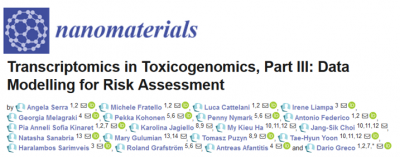Predicting Cytotoxicity of Metal Oxide Nanoparticles using Isalos Analytics Platform
Abstract A literature curated dataset containing 24 distinct metal oxide (MexOy) nanoparticles (NPs), including 15 physicochemical, structural and assay-related descriptors, was enriched with 62 atomistic computational descriptors and exploited to produce a robust and validated in silico model for prediction of NP cytotoxicity. The model can be used to predict the cytotoxicity (cell viability) of…





